How Much Water To Apply Daily To Raised Garden
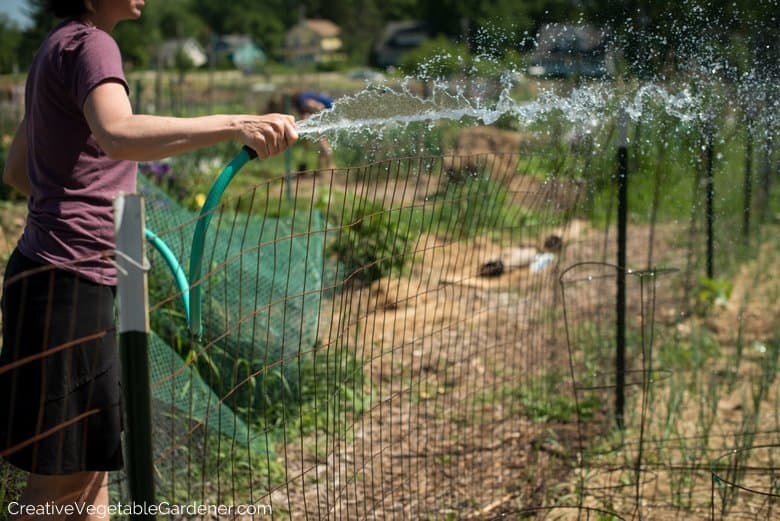
Along with soil and sunlight, water is an extremely vital part of your garden's success. But, watering your vegetable garden can be tricky.
Water too much and some plants, like tomatoes and squash, will be more prone to disease and even start to look very unhappy.
Water too little and vegetables like onions won't grow to their full size and you'll end up with a puny harvest.
Watering incorrectly can cause a lot of unnecessary problems in your vegetable garden throughout the season.
And it can be confusing! How do you know when and how to water your plants?
Don't worry! We'll sort this all out for you. In this post we'll go over the best tips and techniques for watering your vegetable garden so you can set your plants up for a successful and abundant season.
And don't forget to check out the featured video on this page which was filmed in my front yard garden and teaches you the best ways to water your own garden.

Best Tips for Watering Your Vegetable Garden This Season
When a fellow gardener approaches me looking for help with a gardening problem, the first questions I ask are "How often are you watering your vegetable garden?" and "How are you watering?"
Most vegetables are made up of 70-95% water! In order to grow well they need to obtain nutrients from the soil and then move those nutrients around the plant using a solution made out of water.
So, insufficient water means your plants will be lacking in the nutrients they need.
How and when you water your garden is an important consideration in your overall garden maintenance because a lack of water can have a major impact on your garden and the health of your plants.
Here are nine tips and techniques to help you master the art of watering your vegetable garden this season.
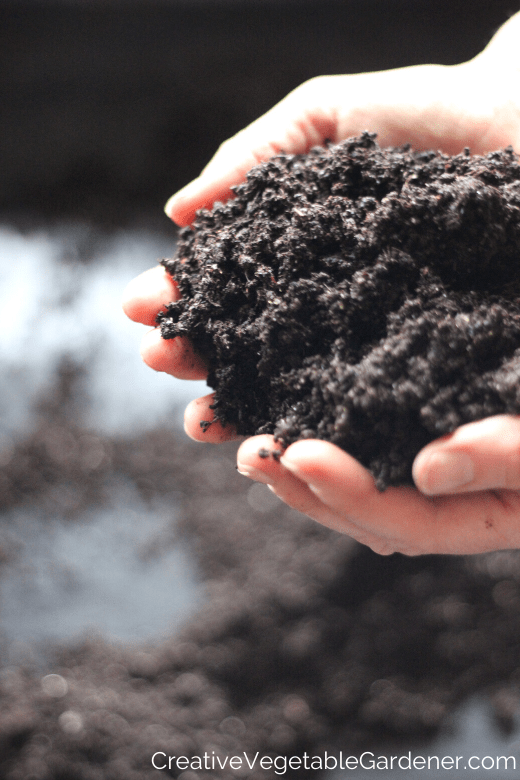
#1: Understand your soil type.
Soil is made up of different sized particles of minerals (sand, silt, clay, rocks), organic matter (living and dead organisms), air, and water.
You may have heard other gardeners talking about what type of soil they have in their gardens. For example, I have clay soil in my yard.
This doesn't mean I have only clay in my soil. Most soils contain all three particle sizes – sand, silt, clay – in different combinations.
Why does this matter? Soils that have more clay, like mine, are more dense and tend to hold water longer.
If you have clay soil you'll likely have to water your garden less often since the soil will retain moisture after rain events and manual watering.
Water travels down through sandy soil much more quickly so it doesn't hold on to moisture for quite as long as more clay-like soil. This means you'll need to water your garden more often and pay closer attention to how quickly the soil dries out.
How do you figure out what kind of soil you have? If you want a more scientific answer, you can send a sample of your soil away for a test that measures the soil texture (along with other things).
Your local Cooperative Extension Office likely conducts testing. Here's an example of the kind of test you're looking for: Michigan State University Extension Home Soil Test.
If you're feeling experimental you can use this cool chart created by the USDA which walks you through how to do a "feel test" to determine your soil type – Guide to Soil Texture By Feel.
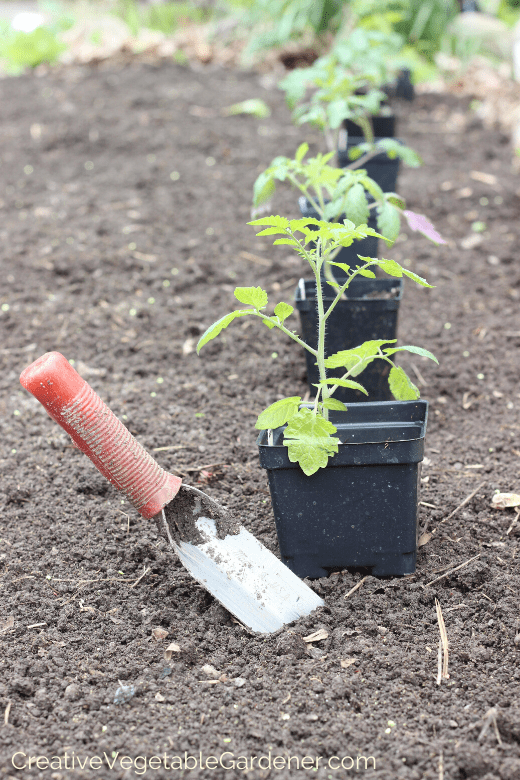
#2: Know how much water vegetables need.
In general, vegetable plants need about one inch of water per week. One inch should be the total amount of water the garden receives – both from rain and your watering.
But, as we discussed above, how much water your garden actually needs is influenced by your soil type.
If you have clay soil like me, you can probably get away with watering about once a week. If it rains one inch during that particular week you won't need to give the garden any extra water.
It should hold the moisture from your last rain very nicely! We'll talk more about this in the next section.
If you have sandy soil that doesn't hold moisture as well, you'll likely need to water a bit more. You could experiment with watering twice a week and giving the garden half an inch each time.
Then, monitor your plants' health and the soil moisture to decide if that's enough.
If you live in an area that receives frequent rains you may not have to water your garden every week. During spring in Wisconsin, where I live, we get regular rainfalls that are often timed so nicely that I rarely have to water my garden.
But, once summer arrives, the weather is hotter and drier, so I sometimes have to pick up my hose and deeply water my vegetables to ensure they're thriving throughout the season.
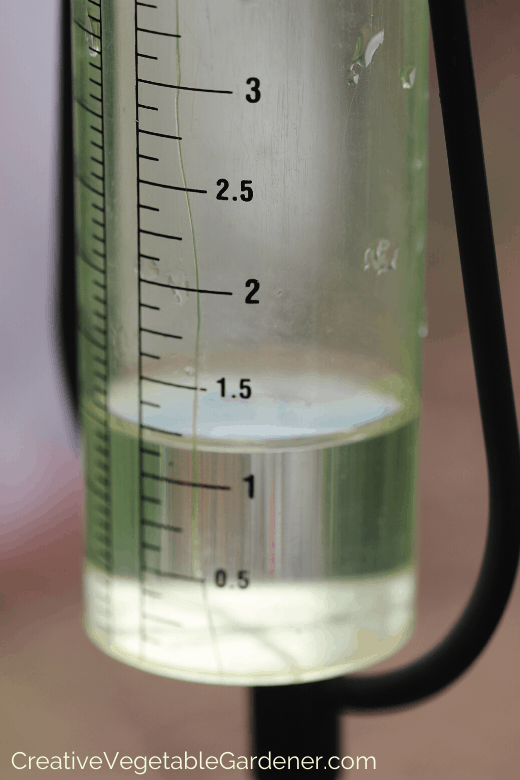
#3: Keep track of how much water your garden is receiving from Mother Nature.
I suggest keeping track of how much rain your garden has received each week by installing a simple rain gauge in one of your beds. (I have this one.)
One thing I've realized over the years is that I have no concept of how much water a rain event brings.
There have been times when I could hear the rain pattering on my roof all night long and I felt sure we received several inches of rain.
But, in the morning when I walked out and checked my rain gauge it said 1/10 of an inch. What?!
That's why a rain gauge is a more reliable measure of how much rain your garden actually received. Don't rely on your "sense" of how much it rained.
I find it easier to set a regular watering day each week. For me, it's usually Monday mornings or evenings.
I keep a mental note throughout the week how much rain has registered in my gauge and water on Monday if necessary.
If it rains an inch or more throughout the week I usually choose not to water my garden that week. You can always dig down into the soil a bit with a trowel to discover how much soil moisture is still present.
Here are some options for simple rain gauges. I like plastic over glass because the glass ones break very easily, and prefer taller gauges that won't get covered up by the plants around them.
World's Coolest Rain Gauge
Metal and Glass Rain Gauge with Solar Powered Light
Jumbo Rain Gauge
Large Easy to Read Acrylic Rain Gauge

#4: Water as efficiently as possible.
Drip irrigation is the most efficient use of water in your garden. But, due to the cost and time involved it setting it up, most gardeners I know (including yours truly) don't have drip irrigation in their gardens.
If you live in an area that doesn't get much rain in the summer, drip irrigation will allow you to leave your garden for weeks at a time and not worry about whether your plants are getting enough moisture.
The Encyclopedia Botanica podcast has a two part series on drip irrigation in the home garden if you want to learn more.
If you don't have drip irrigation, the next best thing is to make sure you're watering at the base of the plants.
Don't set up a sprinkler and then walk away from your garden.
Overhead watering is inefficient because a lot of the water is lost to evaporation. You'll end up with a high water bill and possibly unhappy vegetable plants.
This is because the leaves of squashes, cucumbers, and tomatoes are best left as dry as possible because they're susceptible to so many fungal and other diseases.
When watering my garden I use a heavy duty garden hose with a watering wand and hold it at the base of each plant for 30-60 seconds. I usually judge when to stop by how quickly the water is infiltrating the soil.
When it starts pooling up a bit around the plant I move on. Yes, this takes a long time if you have a large garden.
That's why I pray for one inch of rain every week!
In a good year with consistent moisture I usually water my whole garden by hand only a few times during the summer. And, it's a good excuse to call a friend and catch up while you're out there watering.
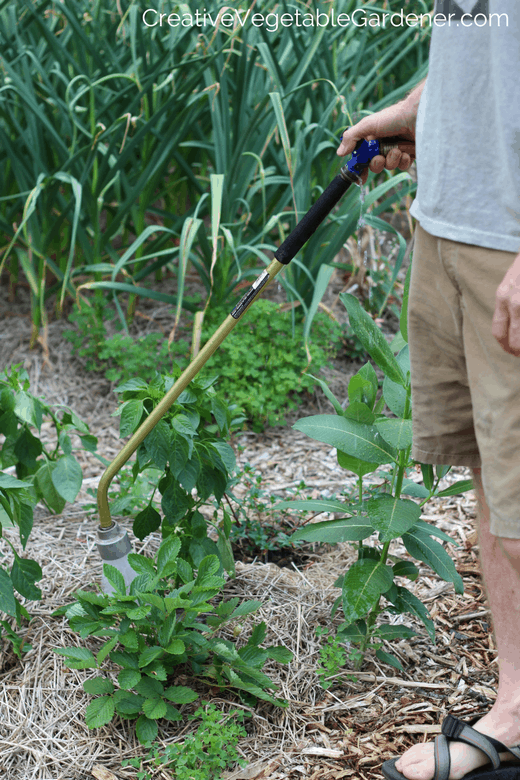
#5: How to water established plants.
Most of what we've talked about so far focuses on vegetable plants that are already established in your garden. You want to encourage your plants to be deeply rooted by watering thoroughly.
They'll be the most resilient when they have well-developed root systems that can forage for water throughout the soil layers.
To help encourage this you want to water less often and for a longer duration. Let the water really soak into the soil to encourage the plants' roots to go deeply into the earth.
Frequent and shallow watering will cause your plants' roots to stay at the surface of the soil.
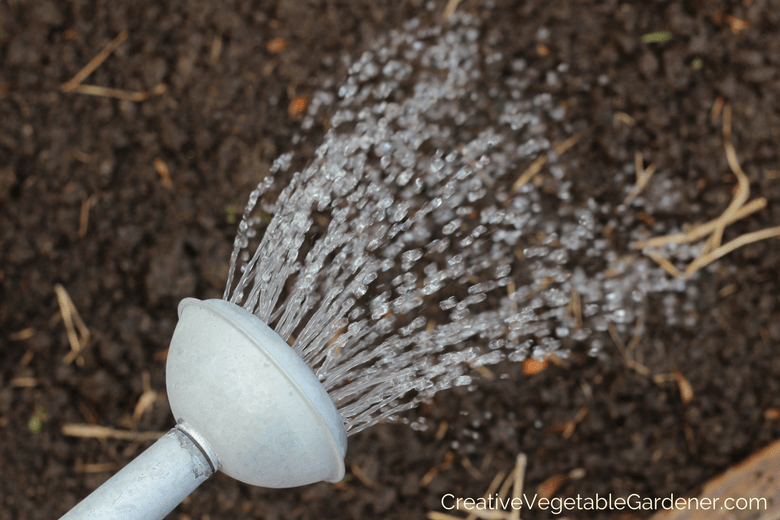
#6: How to water newly planted plants.
When you first plant a vegetable seedling it will go through a bit of an adjustment period. It's not going to be as tough or resilient as your more mature plants.
Be mindful of the fact that it hasn't established its root system yet, so it's not as able to search for water in the soil.
Give newly planted seedlings a little extra attention the first week or two after they're placed in your garden beds. Keep the soil moist to encourage them to grow and establish quickly.
And if the weather turns really hot or windy, give them an extra dose of water.
After you see them put on a bit of growth you can transition them onto your once or twice a week watering schedule.
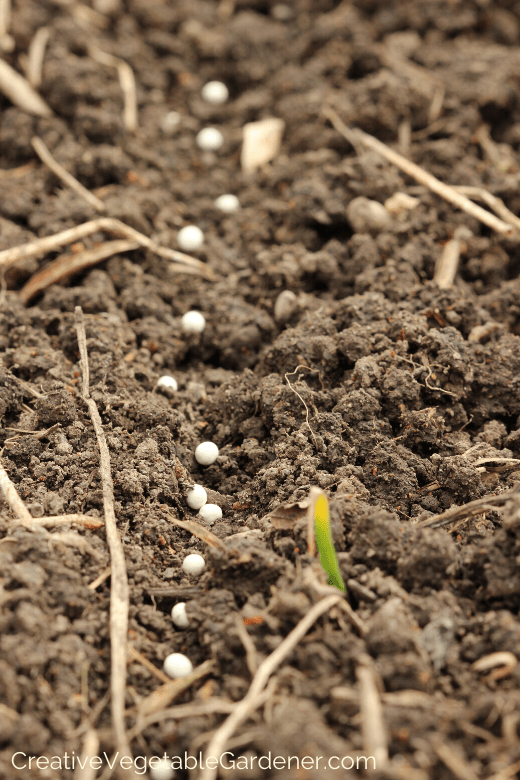
#7: How to water newly seeded vegetables.
If you're waiting for seeds to germinate, watering once a week will be too little moisture. You need to keep the top of the soil consistently moist until germination.
Depending on the vegetable and the weather, you should be giving new planted garden beds a quick soak every one to two days.
I'll often use a watering can for this task. I prefer a metal watering can because it lasts much longer than plastic in the garden.
Remember, the different vegetables take various amounts of time to germinate. Spring radishes will poke through the soil in less than seven days, while carrot seeds can take up to three weeks!
Both need to be kept consistently moist until those first leaves break through the soil.
Once seeds germinate you can put them on your regular once or twice a week watering schedule, unless it's unseasonably hot and dry, in which case they might need some extra water while they establish themselves.
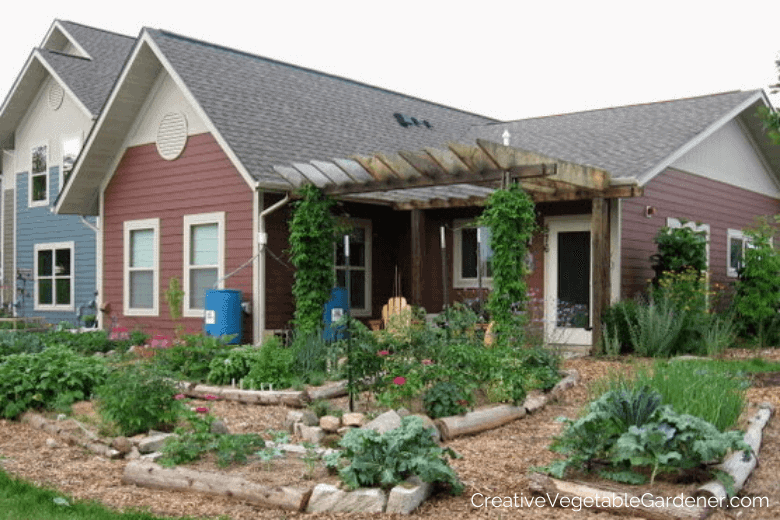
#8: Know the best times of day to water.
The best time to water your garden is in the morning. It's often cooler, so less water will evaporate during the process.
And even though you're watering at the base of the plants, some water will inevitably splash up onto the leaves.
Watering in the morning gives the plants' leaves the entire day to dry out. This is important because water can encourage some diseases to spread throughout your garden.
For many of us, our mornings are busy getting ready for work and school, so watering at that time might be impractical for our schedules.
If that's true for you, it's fine to water in the evening.
It's cooler at that time of day as well, so less water will be lost to evaporation. Just be mindful of how much water you're getting on the leaves of the plants. They won't be able to dry out as quickly overnight.
The worst time to water is in the middle of the afternoon. It's not a responsible use of your local water supply and so much water is lost to evaporation.
Plus it's much more pleasant to be out in the garden in the morning or evening anyway.
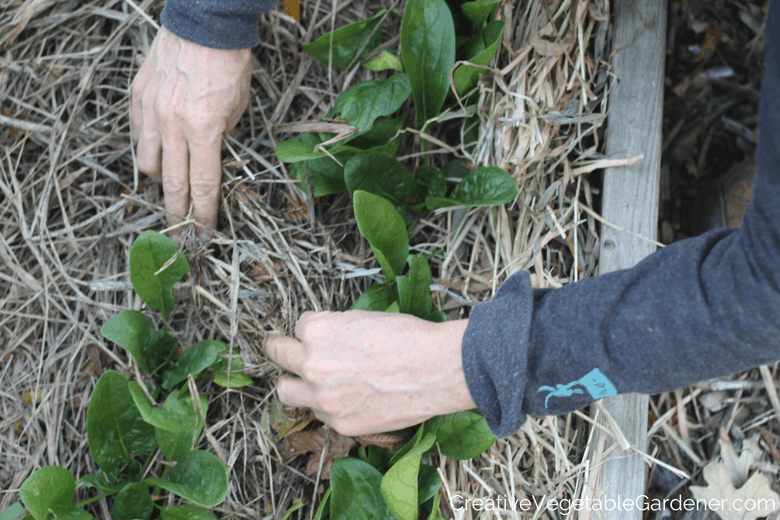
.
#9: Mulch, mulch, mulch.
Bare soil is a bad idea in the vegetable garden. It's an invitation for many weeds to grow and your soil will dry out more quickly, sometimes even cracking from lack of moisture.
In contrast, a heavily mulched garden will require much less frequent watering, which means less hours of work for you!
During the height of summer in my garden I've noticed a stark difference between the texture and color of the soil underneath the mulch as compared to the bare soil exposed to the sun and elements.
The bare soil is often dried out and beginning to crack from lack of moisture, whereas the soil underneath the mulch is dark, crumbly, cool, and moist.
You can use hay, straw, leaves or grass clippings as mulch in your vegetable garden.
I don't recommend using woodchips on your garden beds, but in the aisles is fine.
A heavy layer of mulch retains moisture, keeps weeds at bay, helps with disease issues, and breaks down to add organic matter to your soil. Get the scoop about vegetable garden mulch here.
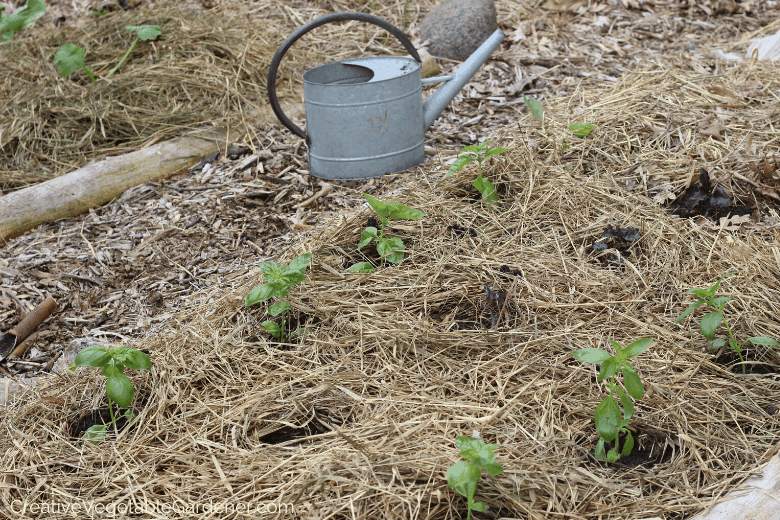
What should I do when it's really hot out?
Here in the Midwest July and August brings some really hot and dry days. We're talking temperatures in the low 90's F. It's right around this time when people start asking me how much I'm watering my garden.
My answer – it depends.
By mid-summer the hot weather vegetables like peppers, tomatoes and basil are well-established with an extensive root system. They actually love the heat of summer and I don't get too worried about them. Plus, they're heavily mulched, so the soil is retaining moisture and keeping cool because it's not exposed.
Also by this time my spring vegetables like salad mix, turnips, radishes and cilantro are long gone. They won't return to my garden until the fall.
So, what's generally growing in my garden are mostly mature plants that should be able to handle the summer heat. I'm not watering every day or even every other day. I might water once a week if it's really dry, but I monitor my plants and the soil moisture to decide that.
The only time I really worry about hot days is when they're occurring early in the season (early June) when I don't feel like my plants are established yet. They're underdeveloped root systems make them more susceptible to lack of soil moisture, so I'll often water these plants right before a heat wave to really soak the soil.
And of course, during a heat wave it can be difficult to get some seeds to geminate because the soil dries out so quickly (I'm looking at you, carrots!), so I'm likely watering the newly planted garden beds two times a day, in the morning and evening.
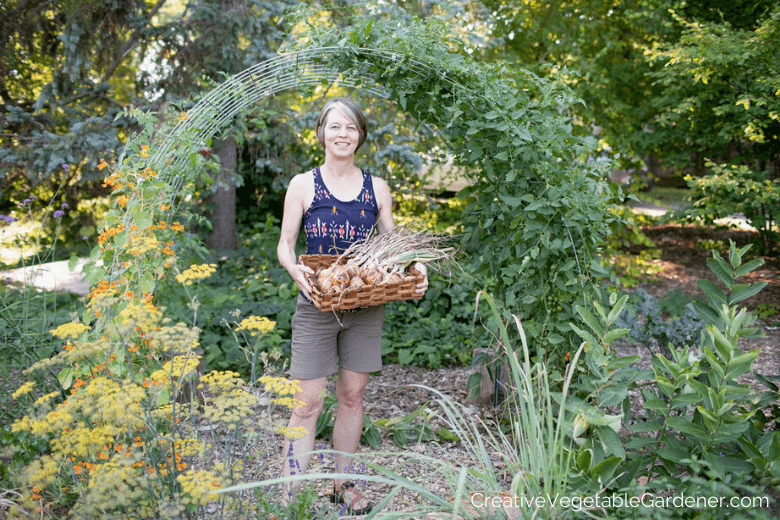
Additional Resources for Getting Better Results from Your Garden
You can find all of watering supplies mentioned in this article, along with my favorite gardening books, seed varieties, seed starting equipment, and more in my Amazon storefront.
If you're having challenges in your garden you can't quite figure out, check out my post 5 Reasons Why Your Vegetable Garden is Struggling.
And along with watering your vegetable garden the right way, another thing you can be doing to set your garden up for success is using an organic garden fertilizer every time you plant a new crop.
This season, examine your established watering habits and see how you can do better.
Is there something in this list you can make a part of your regular gardening routine?
If I had to pick one for you, I'd put mulch at the top of the list (even though it was last in this post!). It's one of the best ways to protect your soil and retain moisture so your plants never dry out from the beating hot sun and warm summer winds.
Understanding how to water is one of the best ways to set your plants, and your garden, up for a successful and abundant season!
And, if you need more help creating a garden that produces abundant harvests AND requires less work, check out these popular posts!
- Why mulch is the ultimate garden tool
- Don't make this mistake when you buy vegetable plants!
- How long do you have to wait for different vegetables to grow?
Did you dig this post? Save it for later on Pinterest!
How Much Water To Apply Daily To Raised Garden
Source: https://www.creativevegetablegardener.com/watering-vegetable-garden/
Posted by: winklerwhadminvabot.blogspot.com

0 Response to "How Much Water To Apply Daily To Raised Garden"
Post a Comment